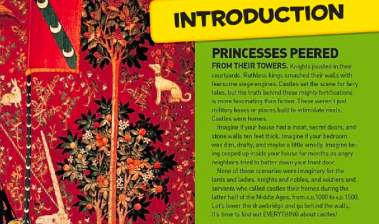The Artist and the King
by Julie Fortenberry
Alazar Press, due out April 7, 2014
review copy provided by the author
Daphne is an artist, but her art -- an honest portrait of His Crabbiness -- does not please the king. Daphne's punishment is to wear the picture, rolled up, as a dunce cap, instead of her beloved red artist's beret.
Almost immediately upon donning the dunce cap, Daphne's Art kicks in. She begins to add decorations to customize the cap. "Soon she was getting compliments." And she began to sell the hats. They became all the rage.
Which enraged the king.
He banished all dunce cap wearers to the wilderness. Even his own daughter, who threw the extra cap she was carrying at his feet and walked with the others into the woods.
Daphne goes back to rescue the flung cap and discovers the king crying. They share a moment of apology and self-realization, then discover that the cap was intended as a gift to the king from his daughter. Together they bring all the villagers back from the woods, and Daphne is given back her beret.
In the current (March/April 2014) issue of The HornBook, the final essay (Cadenza) is "Reading Picture Books 101" by Robin L. Smith. I'll walk you though her seven steps with The Artist and the King.
1. Look at the cover. The cover illustration of The Artist and the King lets us know it's a windy day. This is absolutely necessary for the plot development.
2. Take the paper jacket off and see whether the board cover is different. Nope.
3. Now examine the endpapers. Plain blue.
4. Peruse the title page. The story actually starts here (I love books that do this)! Daphne is painting a picture of His Crabbiness, and the villagers who are her audience are appreciating her art.
5. Read the book all the way through without reading the words. Pay attention to page turns, white space, and pacing. This is a fascinating way to read a picture book -- thinking about the design process, movement in the illustrations, artistic decisions made by the illustrator. The story absolutely is told coherently through the pictures in this book!
6. Read the book with the words. Think about how the words and pictures work together. There are two places where the words in the illustrations interact with the words in the story. I might not have noticed that if not for this list of steps! When read on its own, the text has a nice flow, with long and short sentences and accessible vocabulary peppered with words perfectly chosen for the story: regal, mockery, banished.
7. Go back and check every gutter. Now that's something I'm SURE I've never done, but how smart to make sure that the art matches up across the gutter and that nothing important gets lost there where the left page turns into the right. In The Artist and the King, when the gutter is not used to divide the pages into separate scenes, there is very intentional movement from one page to the other across the gutter. Fascinating!
These seven simple steps make me want to dive into a study of picture books with my students! One savvy reader noted recently that hardly anyone reads from the picture book shelf in my classroom. This may be a way to get some buy-in from fifth graders who are "too cool" for picture books!
The Artist and the King will definitely have a place in my classroom library, as well as in a study of picture books, and in our discussions about theme. Three cheers for a character who stays true to her passion, her art, and who helps the unfair and crabby king to soften up and be more accepting!


























